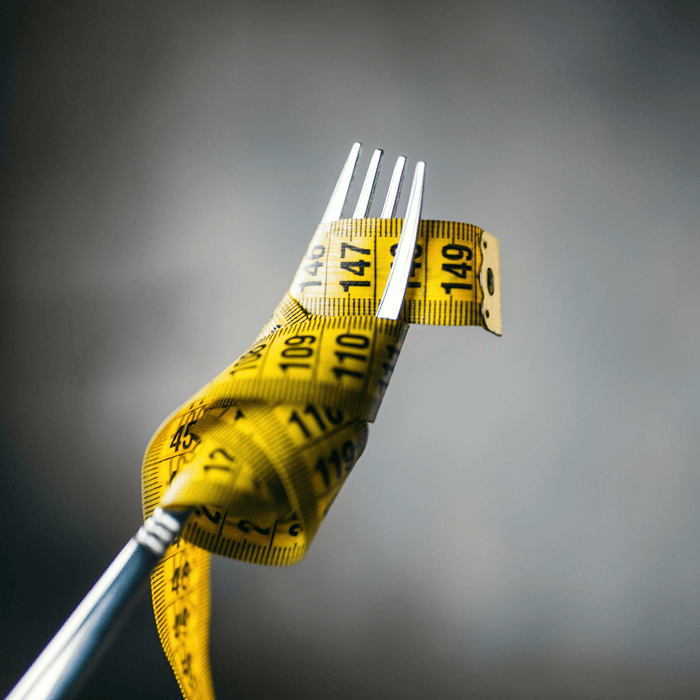All About Fiber: Good Sources of Fiber for a High Fiber Diet
Lifestyle
May 15th, 2021

Since fiber plays a vital role in metabolism, its important to understand the types of fiber, it's characteristics, and where to get good sources of fiber for a high-fiber diet. It helps regulate blood glucose levels, may help lower risk of heart disease, aids in weight management, can suppress hunger, and promotes bowel regularity. The American Heart Association recommends daily fiber intake of 25-30 grams each day. The 2015-2020 Dietary Guidelines recommend 14 grams of fiber per every 1,000 calories consumed. There are two main types of fiber: soluble and insoluble.
Types of Fiber
- Soluble fiber increases the presence of water in bowels and turns to gel during digestion to slow the digestive process, lowering cholesterol levels and increasing absorption of nutrients. Choose this source of fiber if you are experiencing loose stools, alternating diarrhea with constipation, or incomplete stool production.
- Common food sources: oat bran, barley, nuts, seeds, beans, apples, oranges, grapefruits, vegetables.
- Common fiber supplements: Citrucel®, Benefiber®, Fiber Choice®, and Metamucil®.
- Insoluble fiber adds bulk to stools and increases rate of stool formation. Choose this source of fiber if you are experiencing constipation.
- Common food sources: wheat bran, flaxseeds, vegetables, whole grains, fruit with edible peels.
- Common fiber supplements: Fibercon®
There are four characteristics of fiber
- Solubility: whether fiber will dissolve in water
- Viscosity: whether fiber will thicken the liquid it is mixed in
- Gel-Forming: whether fiber will hold liquid as it contacts liquids
- Fermentation: whether fiber will be broken down by the body’s natural bacteria (microbiome) in the gut
Ways to increase fiber in your diet
- Incorporate vegetables with meals
- Snack on fruits or nuts
- Choose whole grains over refined grains
- Incorporate chia or flax seeds in shakes
- Choose whole fruits and vegetables instead of fruit juice
- Add grains to salads
Fiber-Rich Foods and Amount of Fiber
| Food | Portion | Amount of Fiber |
| Oat bran, raw | 1 ounce | 12 g |
| Wheat bran, raw | 1 ounce | 12 g |
| Corn bran, raw | 1 ounce | 22 g |
| Rice bran, raw | 1 ounce | 6 g |
| Fiber One Bran Cereal | 1/2 cup | 14 g |
| All-Bran Cereal | 1/2 cup | 10 g |
| Fiber One Chewy Bars | 1 bar | 9 g |
| Lima beans, cooked | 1 cup | 14 g |
| Broad beans (fava), cooked | 1 cup | 9 g |
| Black beans, cooked | 1 cup | 15 g |
| Garbanzo beans, cooked | 1 cup | 12 g |
| Lentils, cooked | 1 cup | 16 g |
| Kidney beans, cooked | 1 cup | 16 g |
| Navy beans, cooked | 1 cup | 19 g |
| White beans, small, cooked | 1 cup | 19 g |
| Pinto beans, cooked | 1 cup | 15 g |
| Raspberries, raw | 1 cup | 8 g |
| Blueberries, raw | 1 cup | 4 g |
| Strawberries, raw | 1 cup | 3 g |
| Blackberries, raw | 1 cup | 8 g |
| Amaranth, grain | 1/4 cup | 6 g |
| Barley, pearled, cooked | 1 cup | 6 g |
| Popcorn, air popped | 3 cups | 4 g |
| Oats (old fashioned), dry | 1/2 cup | 4 g |
| Rye flour, dry | 1/4 cup | 7 g |
| Quinoa, cooked | 1 cup | 5 g |
| Wild rice, cooked | 1 cup | 3 g |
| Wheat flour (whole wheat), dry | 1/4 cup | 4 g |
| Brown rice, cooked | 1 cup | 4 g |
| Bulgur, cooked | 1 cup | 8 g |
| Bread (whole wheat), sliced | 1 slice | 2 g |
| Spaghetti (whole wheat), cooked | 1 cup | 6 g |
| Banana | 1 medium | 3 g |
| Pear | 1 medium | 6 g |
| Orange | 1 medium | 4 g |
| Apple | 1 medium | 4 g |
| Prunes | dried 1/2 cup | 6 g |
| Raisins | 2 ounces | 2 g |
| Peaches, dried | 1/4 cup | 3 g |
| Figs, dried | 1/2 cup | 8 g |
| Kale, cooked | 1 cup | 3 g |
| Cauliflower, cooked | 1 cup | 5 g |
| Broccoli, cooked | 1 cup | 5 g |
| Brussels sprouts, cooked | 1 cup | 6 g |
| Red cabbage, cooked | 1 cup | 4 g |
| Zucchini squash, cooked | 1 cup | 3 g |
| Acorn squash, cooked | 1 cup | 9 g |
| Spaghetti squash, cooked | 1 cup | 2 g |
| Almonds | 1 ounce | 4 g |
| Pistachios | 1 ounce | 3 g |
| Cashews | 1 ounce | 1 g |
| Peanuts | 1 ounce | 2 g |
| Walnuts | 1 ounce | 2 g |
| Brazil nuts | 1 ounce | 2 g |
| Sunflower seeds | 1/4 cup | 3 g |
| Pumpkin seeds | 1/2 cup | 3 g |
| Sesame seeds | 1/4 cup | 4 g |
| Flaxseed | 1/4 cup | 4 g |
References:
- Dietary Guidelines 2015-2020. Health.gov/our-work/food-nutrition/2015-2020-dietary-guidelines/guidelines/appendix-7/
- NIH U.S. National Library of Medicine. Medline Plus. Soluble and Insoluble Fiber. Medlineplus.gov/ency/article/002136.htm
- Palmer, Sharon. The Top Fiber Rich Foods List. Today’s Dietitian. Volume 10 No. 7(28). July 2008.



